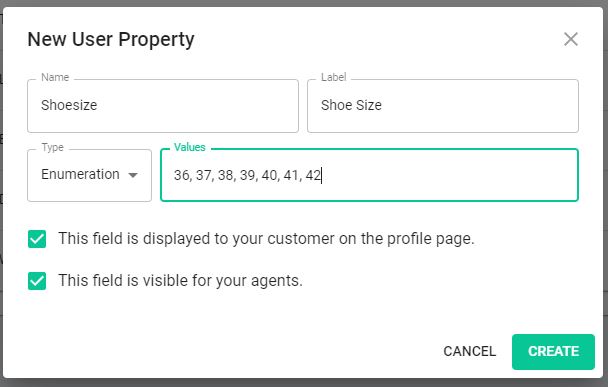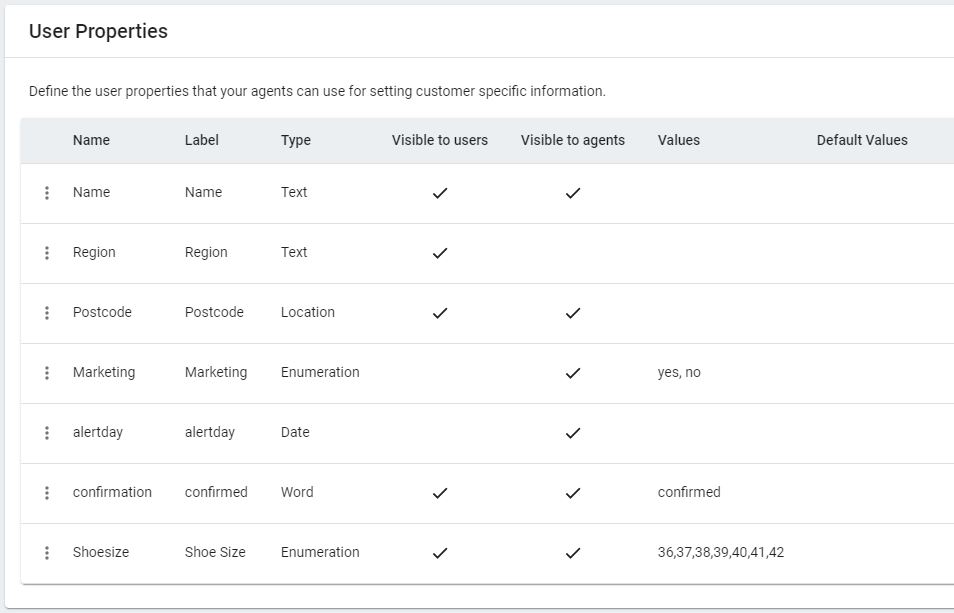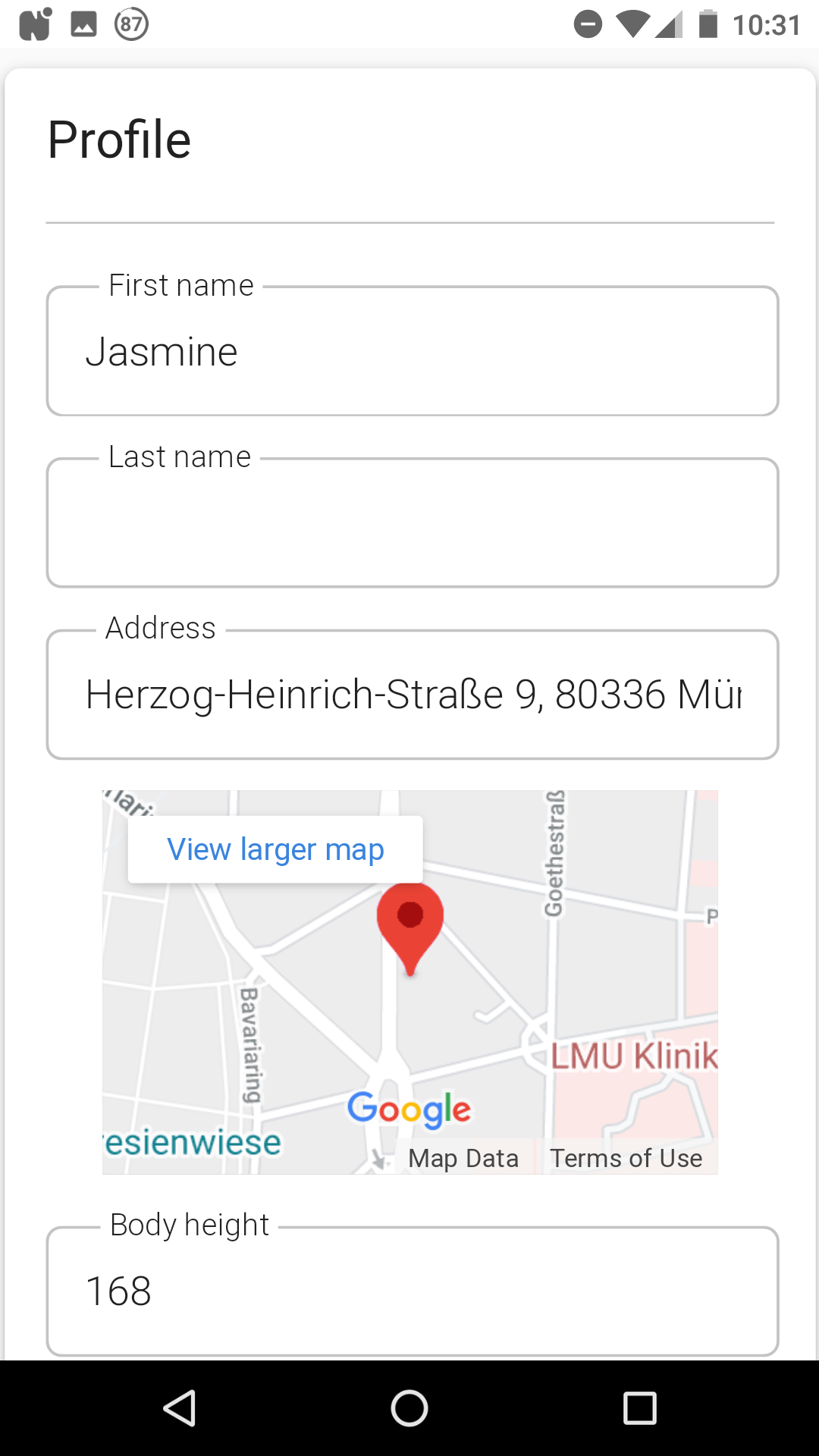What are user properties?
You can use user characteristics to store and manage data about your users in a profile.
You can ask for example: Name, phone number, shoe size, address etc. The characteristic carrier is always the individual user, to whom a profile with your characteristics is automatically created when contacting for the first time. How the data can be filled, you can read here.
How to create user properties:
- Go to Settings >> Channel >> User Characteristics
Note: The characteristics created here are automatically also stored as variables in the Chatbot Builder and can be used within a chatbot. User characteristics that are deleted will also no longer appear as variables in the Chatbot Builder. - Click on the plus sign to create new features. The features can be edited and deleted afterwards. The following must be specified for each feature:
- Name: Assign an internal name for the feature
- Title: Assign a display name for the feature (the user will see it).
- Type: define the data type of the feature (e.g. word/number/location)
- Values: Here you can (optionally) define the allowed values (what makes sense here depends of course on the data type chosen in 3.)
- Visibility for customers: Click-field, if the user should see the feature in his profile
- Visibility for agents: Click field whether normal agents should see the feature incl. content (dispatchers and administrators see the feature incl. content to be able to evaluate the entries).
In example [1] we’ve created a property “shoe size”, which is visible in the user profile and can have values of 36, 37, 38, 39, and 40.

What are the different types of data?
The following are accepted data types:
- Number: data made of numbers (i.e. telephone number)
- Word: data made of one word (i.e. first name)
- Text: data made of text (i.e. a sentence)
- ENUM – enumeration is a list: there are a multitude of options given, but you can choose only one (i.e. school year)
- Collection – a collection is data where a multitude of options are given and you can choose several (i.e. types of sport)
- Location: data in the form of a city, postal code, or address
- Date: data in the form dd.mm.yyyy
- Time: data in the form hh:mm (24 hour clock)
- Entity: data as an identifier for a set data model (i.e. a customer ID number for an entity where the number is linked to further information)
In example [2], a variety of different properties with different data types are visible.

The user will see the following profile view:

You can use the data to provide quality customer consultation.

